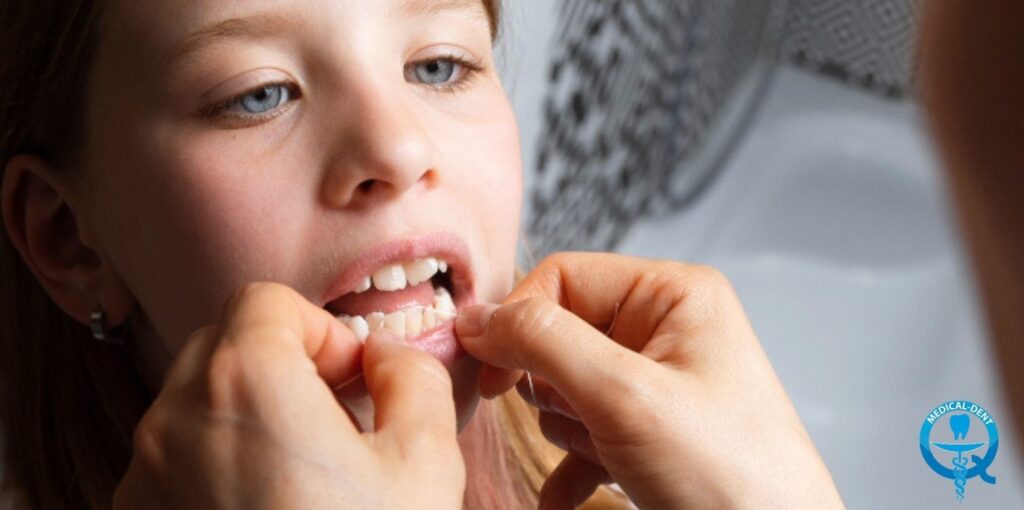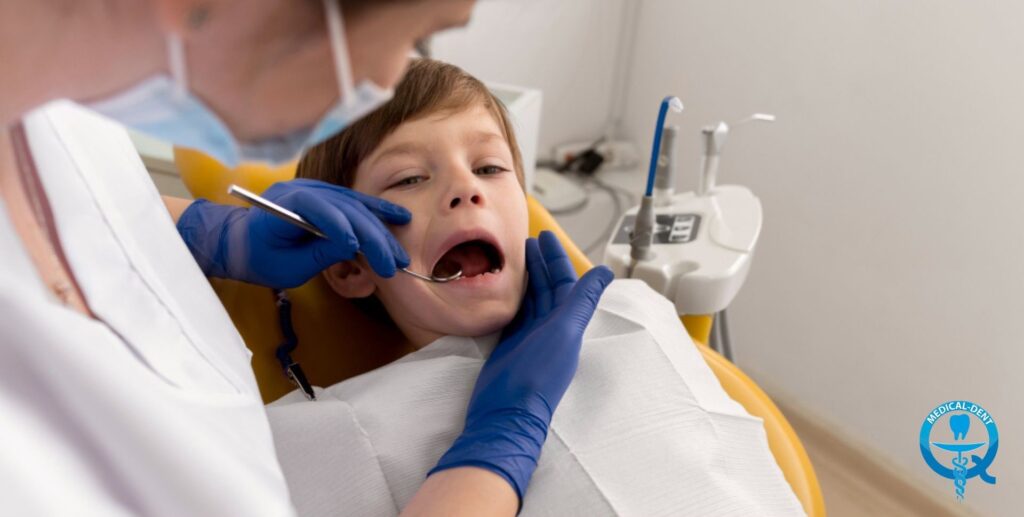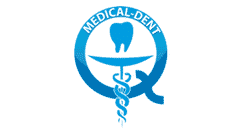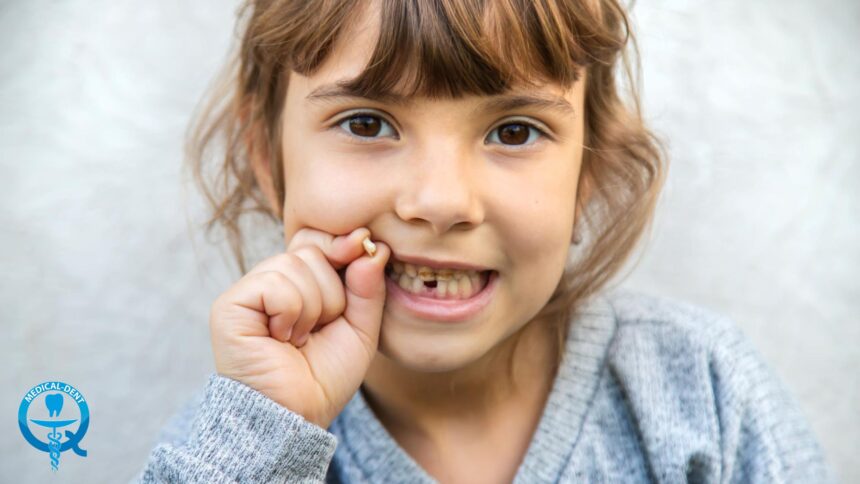Injuries to deciduous teeth are a common problem in children, especially at pre-school age, when busyness and curiosity about the surrounding world encourage accidents. Baby teeth are more susceptible to injury due to their more delicate structure and shallow seating in the gums compared to permanent teeth. It is useful to know how to react in such situations to minimise the risk of further complications and to support the healthy development of the child's teeth.
What are deciduous teeth injuries and their types
Injuries to deciduous teeth are damage resulting from mechanical trauma, which can include fracture, displacement or complete loss of the tooth. They can affect not only deciduous teeth, but also the development of permanent teeth.
Depending on the intensity of the impact and places can be different types of injuries and their consequences. We can divide them into several main categories:
- Crown fractures - this is the most common type of injury where the visible part of the tooth is damaged. Fractures can be superficial or go deeper, requiring specialist treatment
- dislocations, i.e. displacements, may be partial (the tooth is loose) or complete (the tooth falls out of the socket)
- excessive movement of the tooth - may occur after an impact, even if the tooth is not visibly damaged
- Gum and soft tissue injuries - include bleeding, bruising and damage to the gums and oral mucosa that often accompany tooth trauma.

When do they most often occur?
Injuries to deciduous teeth are most common in children aged one to four years. During this period, children are learning to walk, run and explore their surroundings, which increases the risk of falls and impacts.
Front teeth, i.e. ones and twosThey are the most vulnerable to trauma as they are located in the most protruding part of the mouth. On top of this, deciduous teeth are more susceptible to injury due to their softer structure and shallower gingival embedding compared to permanent teeth.
Although there is less risk of injury as we age, it is important not to bagatise every fractured or cracked tooth. And what is the best way to deal with such a situation?
First of all, stay calm! Your child may be frightened, so it is important to reassure them. Secondly, inspect the injury - if there is bleeding, gently apply a moist, clean gauze pad or tissue. Avoid touching the damaged tooth to avoid aggravating the injury.
Then check the mobility of the tooth. If a tooth is loose or moving, immediate dental consultation may be necessary. Also look for signs of soft tissue damage, such as bruising or bleeding gums, which also require attention.
Even if the injury seems harmless, it is worth visiting your dentist. A specialist will assess the extent of the damage and indicate whether the tooth requires treatment, observation or other intervention.

Treatment of trauma to deciduous teeth
Before discussing this topic - the most important. Milk teeth should be cared for in the same way as permanent teeth. We wrote more about this in the article "How to care for baby teeth and why it's so important".
Back to the topic. The treatment of injuries to deciduous teeth depends on the type and extent of the injury. Minor fractures often only require the sharp edges of the tooth to be smoothed or a composite to be applied to protect the tooth from further damage.
In cases of dislocation or mobility, it can be the need to put the tooth back in place and sometimes even remove it. We remind you that this is always a last resort "Extraction of a deciduous tooth when it is necessary".
In contrast, gum and soft tissue injuries usually do not require intensive treatment, but oral hygiene is crucial to prevent infection.
Finally, we would like to remind you - an early dental consultation allows you to assess the extent of the injury and adjust treatment. Remember, missing a tooth, whether deciduous or permanent, has serious consequences. You can read more about them in our article "Missing tooth - when you need to fill the gap left by an extracted tooth".

